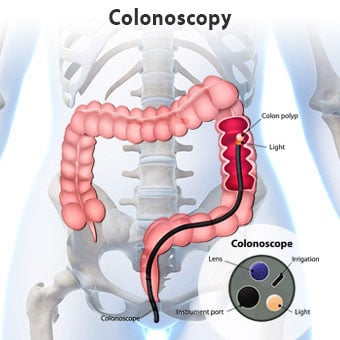Anorectal manometry

What is Anorectal manometry?
We eat two or three meals a day, the food travels down the gut, and digestion may be complete in 6 to 12 hours after each of those meals. only the undigested residue reaches the colon, which absorbs the water to make formed stools. All formed stool is ultimately accommodated in the rectum, and we acquire a trained habit of passing stools; ritually on waking in the morning.
So, the “Team” of the rectum and anus are responsible to “receive & store” stools without distracting you; and “efficiently discharge” them at your habitual time. Anorectal manometry assesses whether this is happening correctly in your case.
To understand how this “Rectum-Anus Team” works, let’s split their work into parts:
| You do not need to think of controlling your stools through the day |
This is because the anal
sphincter is tonically contracted to give continence |
Weak tone will result in fecal
leakage; either of flatus or stools, especially when you have a diarrhea |
| As the rectum fills with stools,
you become aware you will need to go sometime. |
The rectum relaxes to
accommodate all stools it can
receive, and sends messages that evacuation should be considered. |
If the rectum is inflamed, it will
empty very quickly; if the rectum is too large, you will not get an urge soon enough |
| You will need to go soon, but it is easy to control | There is a constant sensation but it is easy to control stools | |
| You are succeeding hold the stools in, but you are just holding it back. | There is now, an urge to defecate soon | |
| As you pass stools, you exert to push, and you quickly evacuate the rectum and ‘be done’. | There is synergic contraction of the rectum, with relaxation of the anal sphincter at the same time. | If the rectum does not contract, or; the anus does not relax simultaneously, constipation resulting will be due to dyssynergic defecation. |
You have involuntary control on your stools through the day. Through the day the anus remains closed, without needing to pay attention to doing so. Even if we lift a bag or filled bucket, or cough or strain; we should not leak stools or gas. In manometry, a catheter is passed into the rectum and the resting function is assessed. How much stool can you hold before you know you need to go? The balloon at the tip of the catheter is serially inflated with increments of water. Smaller volumes may not be sensed at all. At a threshold volume, you will just feel “some stools have arrived”. This is the first sensation.
Rectal compliance: Henceforth, while receiving every increment of water in the distending balloon, the rectum senses a stretch; then distends to accommodate the volume. You will sense every distension, but given time; this will fade away and you will not feel an ‘urge to go’. At one volume of water, the sensation of rectal distension will not fade away. This volume is called ‘volume for constant sensation.
Urge to evacuate: further distension may lead to the step where you may feel, that if the balloon is not deflated, it may pass out on its own. This stage is the complete capacity of the rectum. The balloon is then defalted completely.
